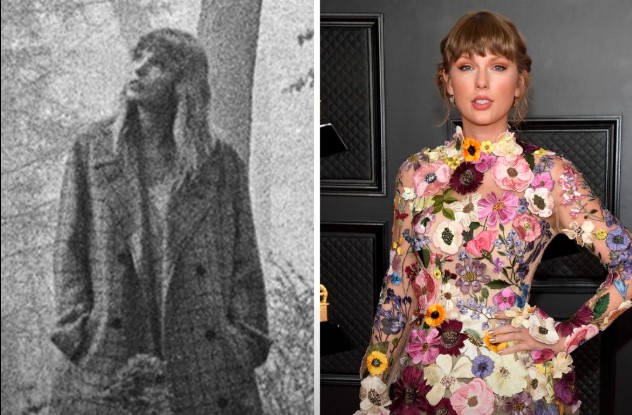As folklore turns 5, fans reflect on its brilliance—and the complicated legacy of who gets to be seen as “serious”
July 24, 2025: On this day in 2020, Taylor Swift quietly dropped folklore, a surprise quarantine album that signaled a dramatic shift in her sound and image. Gone were the stadium anthems, the sparkly leotards, and the high-gloss pop production. In their place: moody piano ballads, black-and-white aesthetics, and a newfound embrace of fictional storytelling. Five years later, the album’s impact still resonates—and so does the conversation it started.
The Era That Changed Everything
Swift’s retreat into cottagecore—a world of cardigans, moss-covered pianos, and quiet introspection—felt like a bold pivot. Produced with Aaron Dessner and Jack Antonoff, folklore leaned into indie-folk and alternative, earning her the Grammy for Album of the Year, and praise from even her most hardened critics.
Suddenly, Swift wasn’t just a pop star—she was a “serious artist,” celebrated for restraint and nuance. The album cemented her as a versatile songwriter capable of crafting character-driven narratives and haunting melodies. It was a rebrand so elegant and effective that it felt effortless. But was it?
Literary Acclaim or Cultural Gatekeeping?
With folklore, Swift was welcomed into circles that had long resisted her. Critics hailed her as poetic, mature, and introspective. The same artist once mocked for teen love songs now earned comparisons to Sylvia Plath and Joni Mitchell.
But this sudden acceptance raises a larger question: Why did it take a muted aesthetic and indie co-signs for Swift to be seen as legitimate? And more broadly: Who gets to be called a “serious artist” in pop music? Historically, Black women, queer artists, and other genre-pushing creatives have struggled to receive the same validation—even when their work is just as complex.
Did folklore‘s critical success subtly reinforce the idea that only certain types of sound (white, acoustic, melancholic) equal artistic depth?
Reinvention or Survival?
Swift’s ability to reinvent herself isn’t just impressive—it’s necessary. In an industry notorious for its double standards, female pop stars often face diminishing returns the older they get. Swift’s transformation into a quiet, cardigan-clad storyteller wasn’t just strategic—it was survival.
By rebranding herself in the midst of the pandemic, she reclaimed control over her narrative. She bypassed the usual media circus and let the music speak for itself. The risk paid off—and laid the groundwork for her current mega-success with The Eras Tour and re-recorded albums.
folklore‘s Legacy, Five Years Later
| 🎧 Album | folklore (2020) |
|---|---|
| 🏆 Grammy Wins | Album of the Year, Best Pop Album |
| 📈 Sales | Over 3 million copies worldwide |
| 💬 Critical Score | Metacritic: 88/100 |
| 🌍 Cultural Impact | Inspired a wave of introspective, “cottagecore” pop |
It also helped reshape how pop stardom is perceived: less about spectacle, more about storytelling.
Final Thought: Dual Realities
Taylor Swift’s folklore remains a masterpiece. It’s tender, lyrical, and deeply resonant. But as we celebrate its fifth anniversary, we must also question the systems that shape what’s deemed “worthy” of praise.
Swift’s pivot into indie-folk shouldn’t have been necessary to prove her depth—but it worked. And in doing so, it sparked a conversation far bigger than itself: about artistry, identity, and the invisible rules of pop culture.
Published by HOLR Magazine


